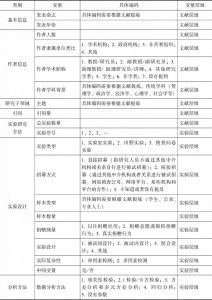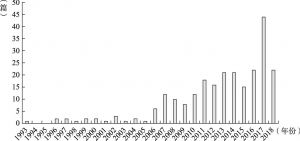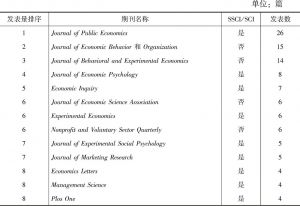论文
个人慈善捐赠的实验研究趋势和核心议题探析
摘要
《慈善法》的出台标志着我国慈善事业正逐渐规范化与法制化。如何有效激励个人慈善捐赠却始终是我国面临的难题。西方国家用“实验法”研究个人慈善捐赠动机与机制已较为成熟。本文梳理了30余年西方主流学术期刊上发表的245篇有关个人慈善捐赠的实验研究文献,通过量化编码统计和核心议题述评,探析国外捐赠实验的前沿研究进展,以帮助我国学者熟悉西方个人慈善捐赠实验研究的发展趋势与动态,把握国际研究热点,了解各类实验设计的学科偏好,结合我国国情,开展接轨国际主流趋势的高质量慈善捐赠实验研究,进一步推动我国公益慈善事业的良性发展。本文分析结果发现国外个人捐赠的实验研究呈现以下特点:经济学主导的学科引领趋势;实验设计偏好被试间设计和多因素分析;最常用方差和多元回归模型分析数据;跨学科合作频繁;以及核心议题具有较强的学科属性等。本文结合当前我国慈善事业现状,给出了中国情境下开展个人慈善捐赠实验研究的具体建议与展望。
检索正文关键字
论文目录
- 一 引言
-
二 数据与方法
- (一)研究问题与范畴
- (二)数据来源及筛选方法
- (三)分析变量的具体描述和分析思路
-
三 分析结果
- (一)捐赠实验文章总体发展与作者信息概述
- 1.总体发展趋势
- 2.作者合作情况和学科背景
- 3.实验数量和结论可验证性的要求
- 4.学科间差异
- (二)捐赠实验研究方法动态
- 1.研究设计特点
- 2.数据分析特点
- (三)捐赠实验核心议题述评
- 1.利他主义
- 2.募捐
- 3.捐赠者特征
- 4.捐赠成本机制作用
- (一)捐赠实验文章总体发展与作者信息概述
-
四 讨论与建议
- (一)学科间合作的建议
- (二)研究设计和数据分析的建议
- 1.实验类型的选择
- 2.实验样本的选择
- 3.实验设计和复杂度的考虑
- (三)个人捐赠实验核心议题建议
- (四)结语
相关文献
查看更多>>>








